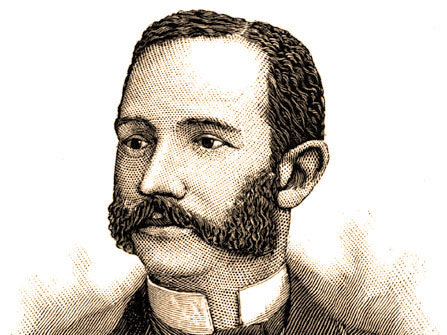Particularly alert Milwaukeeans will notice that Glover Street intersects with Booth Street, high above the Commerce Street development boom.
Read Ruby West Jackson and Walter T. McDonald's book "Finding Freedom: The Untold Story of Joshua Glover, Runaway Slave," and you'll immediately recognize the significance of that crossroads.
Glover, who escaped enslavement in Missouri and was arrested in Racine, was busted out of the Milwaukee court house jail in March 1854 thanks in good part to the work of Brew City abolitionist Sherman Booth.
Despite the fact that Glover's story is so often discussed in these parts, "Finding Freedom" is the first in-depth look at the story. It was published in hardcover by the Wisconsin Historical Society Press in May.
"Prior to our efforts all available accounts of Joshua Glover focused exclusively on the court trials of the abolitionists associated with his release from jail," says McDonald.
"Joshua Glover himself was disposed of with some variation of the phrase, '...and he escaped to Canada.' There have been no books we are aware of written primarily about Joshua Glover. Our account of our search is contained in the section of the book, 'The Search for Joshua Glover.' To best of our knowledge, no other book contains as complete an account of Joshua Glover's life."
Indeed, in a 135 heavily footnoted pages, Jackson and McDonald recount the details of Glover's purchase in St. Louis by Benammi S. Garland, his escape and his arrival in Racine. Glover's capture and the events at the Milwaukee court house are finely detailed, as is the story of his route from the court house melee to his eventual escape to Canada.
To read it is to be transported back in time to a world that seems unfathomable to modern Americans. As a reader, it's interesting to see how even abolitionists who put their work, reputation and freedom on the line to free the slaves viewed those they worked to help.
But, McDonald says, judging the main players in the story was not the focus of their work.
"A careful reader will note that we made some judgment calls. We tried to keep these to a minimum because we were more concerned with producing a compelling, accurate narrative than with writing a polemic. We also wanted to keep the focus on Joshua Glover as the central character.
"We also hoped our book would inform readers that abolitionists, as much creatures of their time as we are of ours, were still able 150 years ago to rise above some of their feelings to 'do the right thing' even thought they were violating a law that could jail them and fine them a year's income or more."
Work on the book began about a decade ago, McDonald recalls, when Jackson became interested in the story.
"In the late '90s Ruby was employed by Wisconsin Historical Society as their African American History Coordinator. As part of that position she was loaned to the tourism department to research and write an African American-oriented tourism brochure.
"In the course of her research for the booklet, which was published in the late '90s, she discovered Joshua Glover in what she called, 'the bowels of Racine Heritage Museum.' Intrigued by the information, and aware that I was close to retiring, she asked if I would like to write a book about him with her."
McDonald says that the project was a true collaboration that involved two people working diligently to gather materials and then discussing them.
"We did our research both together and separately," he says. "I generally did the typing of first drafts on the computer, following a discussion between us and Ruby would return it to me with her edits. This continued until we were mutually as satisfied as possible and then we would move to another section."
The result is a fascinating and extremely readable story that is so lucidly narrated that it would be great even for young adult readers. A selection of illustrations -- often from the WHS collections -- helps to further conjure this Milwaukee story for modern readers.
Born in Brooklyn, N.Y., where he lived until he was 17, Bobby received his BA-Mass Communications from UWM in 1989 and has lived in Walker's Point, Bay View, Enderis Park, South Milwaukee and on the East Side.
He has published three non-fiction books in Italy – including one about an event in Milwaukee history, which was published in the U.S. in autumn 2010. Four more books, all about Milwaukee, have been published by The History Press.
With his most recent band, The Yell Leaders, Bobby released four LPs and had a songs featured in episodes of TV's "Party of Five" and "Dawson's Creek," and films in Japan, South America and the U.S. The Yell Leaders were named the best unsigned band in their region by VH-1 as part of its Rock Across America 1998 Tour. Most recently, the band contributed tracks to a UK vinyl/CD tribute to the Redskins and collaborated on a track with Italian novelist Enrico Remmert.
He's produced three installments of the "OMCD" series of local music compilations for OnMilwaukee.com and in 2007 produced a CD of Italian music and poetry.
In 2005, he was awarded the City of Asti's (Italy) Journalism Prize for his work focusing on that area. He has also won awards from the Milwaukee Press Club.
He has be heard on 88Nine Radio Milwaukee talking about his "Urban Spelunking" series of stories, in that station's most popular podcast.



